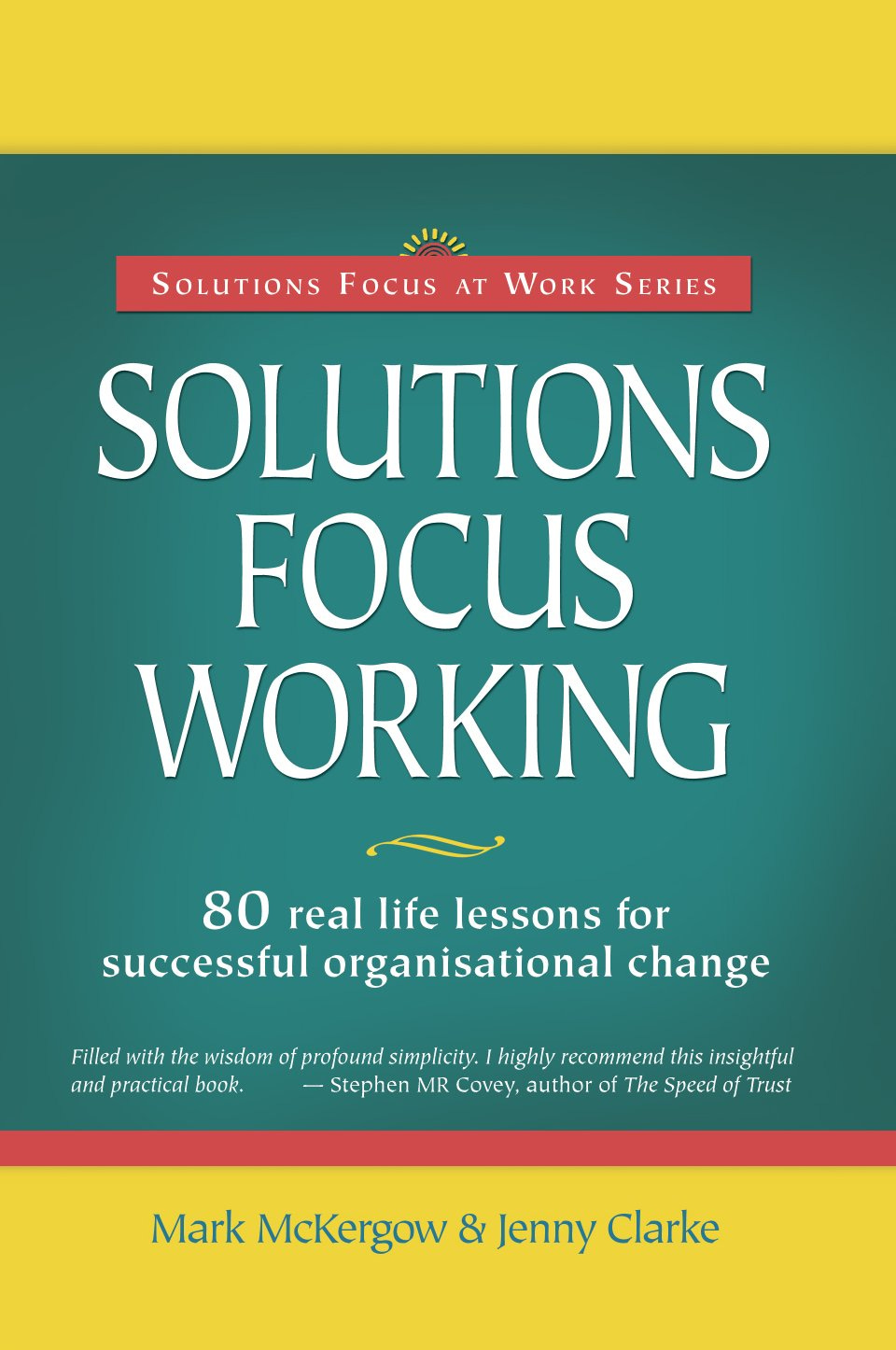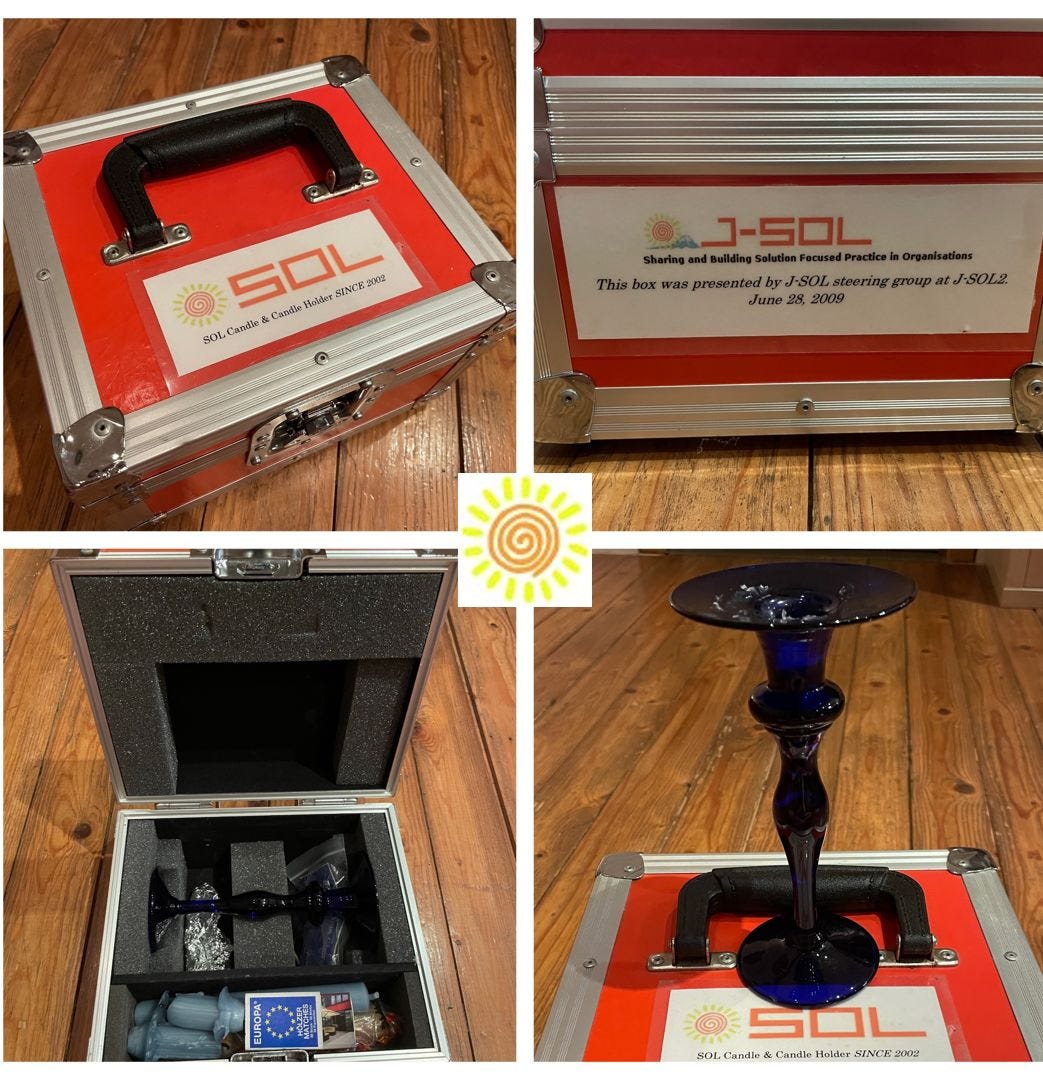70. Before, during, after
Ways to use Solutions Focus in high-stakes and time-pressured situations.
Last week I was interviewed, along with my co-author Paul Z Jackson, for the latest episode of The Worker Learner podcast. This show is produced in Australia and introduced by Andrew Rixon (Dept of Business, Strategy and Innovation at Griffith University, Gold Coast and author of Facilitating With Stories) and Sam Wilson, Department of Management and Marketing at Swinburne Business School, Hawthorn, Victoria. It’s produced as part of the Griffith University Professional Learning Hub, their platform for executive and professional education.
The focus of this episode is, slightly unusually, on coaching in emergency medicine settings. As you can imagine, that’s usually a high-pressure and high-stakes situation where the physician is supposed to be ‘in charge’ and using their detailed knowledge and expertise to help the patient, and even just keep them alive. The idea of them being able to draw on coaching methods in these situations seems not at all easy… However, Andrew, Sam and their colleagues have been researching into the desirability and potential of establishing coaching cultures in these settings.
Paul and I were invited onto the show to talk about Solution Focused coaching and in particular our new edition of The Solutions Focus book. As the conversation started, I found myself saying that there were three kinds of time when coaching in general, and SF coaching in particular, might be brought to bear in this kind of challenging situation: before, during and after. It struck me that using SF coaching in the heat of the moment, while a good and brave option, might not always be the easiest place to start. So how could we use it in the quieter moments before and after the main burst of action?
As our discussion evolved, I was able to flesh out the different ways that SF might help in these three periods. And it’s worth unpacking here too.
Before
Let’s imagine it’s the start of a shift (or when the physician comes on shift) in the emergency room. As the team gathers, there’s a great opportunity to set things up to go well. Reach understandings of what we’re trying to do, how we’re going to do it, what’s helped us succeed in the past, how are we going to cope with the inevitable setbacks and so on.
Let’s imagine we can get the team into a huddle for a quick check-in. Here are some questions which could pay off big time. Make sure everyone has a chance to answer, briefly.
What’s your name and your role today?
What’s helped you to work well in this role, in the past?
What are you going to pay paying attention to, to make sure it’s a successful shift?
How are we all going to cope with the inevitable setbacks and challenges?
These questions help to place the team in a position of resourcefulness (connected to their skills, experience, successes and know-how). In the very first edition of The Solutions Focus, we connected the Future Perfect tool (looking ahead to a more successful tomorrow) with the Hopi tribe from North America:
When Hopi Indians prepare to go hunting they don’t discuss a strategy, splitting the problem up into parts. They sit down together and as a group imagine good hunting. This is like a different grammar of time.
It’s like a different grammar of time because to we not looking ahead to the future, we are sitting immersed in it. This powerful stance is used today by all kinds of top-level performers including sports people, theatre actors – and indeed emergency workers. Those fields have a lot in common – you only get one chance, so best be placed to make the most of it. We all get on the same page, connect and together face the coming storm.
During
This is not, on the face of it, an easy time to be employing SF coaching. In the middle of a hectic and confusing flurry of activity it can be very difficult to find the reflective space that’s needed. However, there are ways to use SF questions even in the midst of the action which can both help and be a lot more useful than a problem-focused stance. Pointing out where someone is going wrong is unlikely to bring out the best in them… but taking action may well be necessary to avert disaster.
A quick burst of refocusing can be a very effective option here – whatever your position in the hierarchy, you can help bring clarity in the midst of confusion.
What are we trying to do here?
What do we need to focus on right now?
What do we need to do next?
Another thing to have in mind is the interests and desires of the client or patient. Medics can be very good at assuming they know what their patients want, they can be rather slow to confirm these assumptions. Admittedly in the context of an emergency situation the priority may be clear (keep the patient alive!) but as things progress there may well be a chance to make sure that the interests of the key person in the room are in fact being served.
What does the patient want?
What do we need to do next?
What do you need right now?
It may well be possible to bring further reflection to bear when the immediate crisis is over.
After
At the end of the shift there may well be a chance to do some SF debriefing to close up the experience. This serves multiple purposes; it both helps everyone to learn from what’s just happened, and it can be a key part of leaving behind the stress as the team go off to bed and back to their outside lives.
In SF, of course, the focus is on what’s going well rather than what went wrong. Curiously, this is even more true when things have indeed gone (partially) wrong! (The assumption is that even in the most disastrous experience there are some things that went well.) So, we may have questions like:
What went well today?
What did we do that was right?
What were you particularly pleased to notice?
What else? What else? (This is key – there are probably 10 or 20 things that went well…)
And finally, what are we going to do next time?
There is a particularly good example of this kind of review in our Solutions Focus Working book of real-life case studies (now available worldwide on Kindle). Hans Zeinhofer recounts his experience as a managing director of Energie AG Vertrieb in Austria following a calamitously worded letter went out to all their customers. The board demanded an ‘urgent and complete report’ which Hans assembled by asking just two questions:
“What did we do right, what went well?” (What else, what else etc)
“What will we do better (the next time)?”
As Hans recalls in the book:
…many constructive and future oriented ideas were suggested. Most of them were indeed applied during the next similar campaign. The meeting ended in an obviously positive mood. The report to the senior management consisted of the two lists above. It was some sort of a paradoxical intervention for the senior management as well - it caused some astonishment but was accepted with obvious relief.
The point about this kind of review is that it brings the team/organisation together, helps both dig into the detail of the event in a positive and useful way, and also produces some good constructive next steps.
Conclusions
Using SF coaching in emergency medicine settings might appear challenging… and indeed it can be. However, by taking the focus on what happens before (how to prepare) and after (how to review), the scope of taking a solution-focused stance is both widening and deepened. There’s more to emergency work than the emergency, just as there is more to any organisation than the upfront production/service directly to the customer. Organising can be seen as a continuous process, even if the key delivery happens in short bursts. Using SF ideas throughout the chain of events can help any team be more effective and more humane.
Dates and mates
The Worker Learner podcast is a fine collection of episodes about stories and insights about work and life. Our episode isn’t live yet as I write this, but it should be online shortly. Check out the entire series at
https://shows.acast.com/the-worker-learner
Save the date for the 2025 SOLWorld international conference! This is the world gathering of people who use (or want to use) SF ideas in organisational and workplace settings. The event will be in Mechelen, Belgium on 15-17 May 2025. Here is a picture of the SOLWorld candlestick, in its special travel box, waiting to go to Belgium to be lit at the start of the event. For more on the candlestick and what it means in SOLWorld, check out my piece here.







